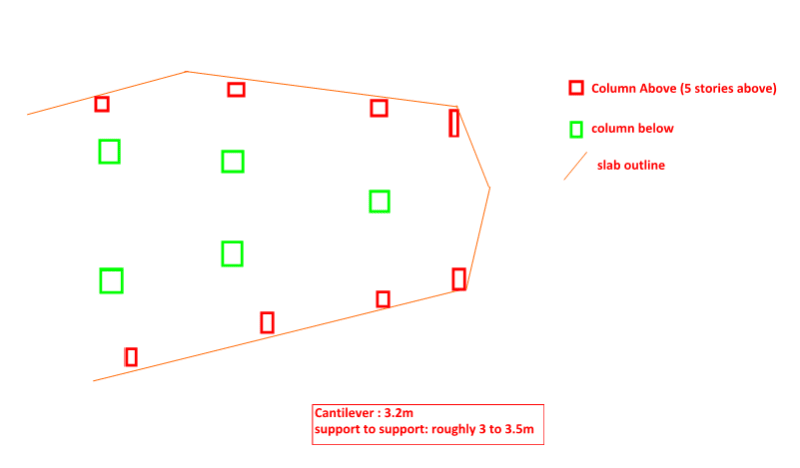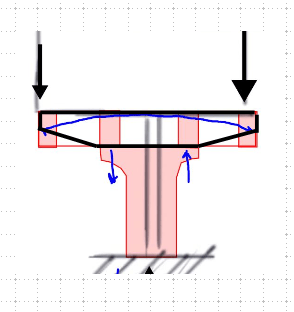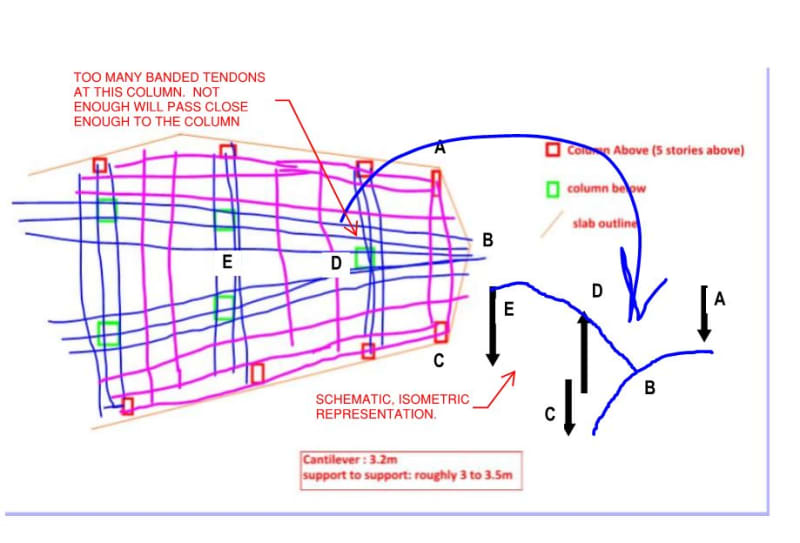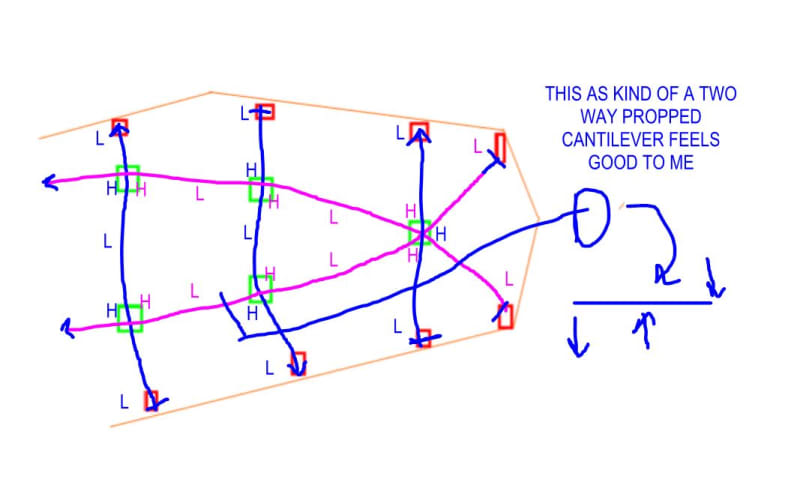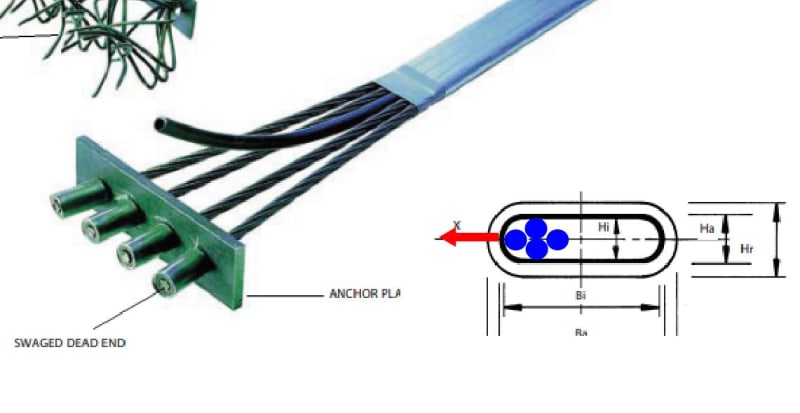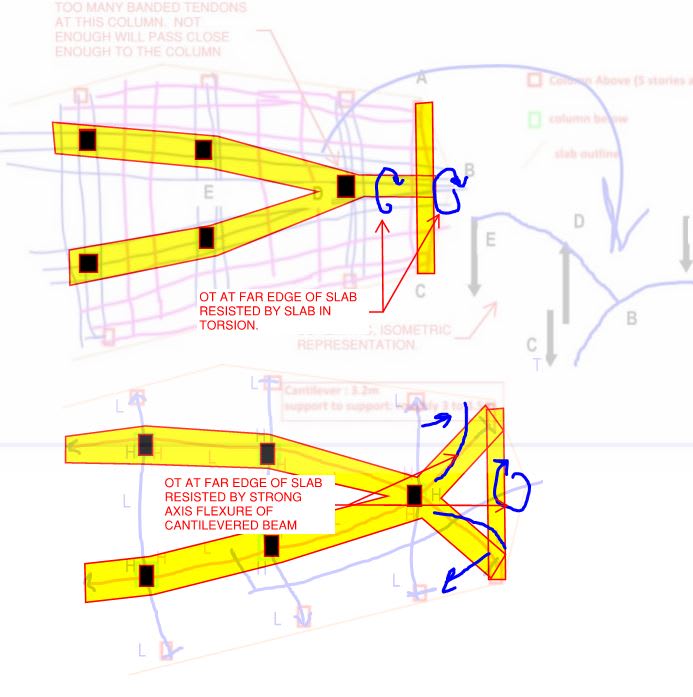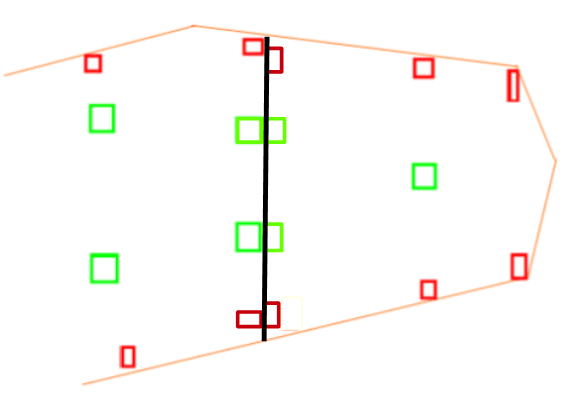OP you said you are not designing the transfer slab.
Does this mean you/your company have subbed out the PT?
Have you had this same conversation with the PT designer? Gauged their level of concern? If you are EOR it all flows to you regardless.
The typical floors are an easy sub-out. The transfer slab is tougher. I'd lobby to do the transfer with mild reinf.
As was mentioned, long-term deflection likely controls transfer slab depth. Claim concrete depth/set appropriate expectations first.
I'd also be looking hard for SOME level of redundancy if that rightmost column ever failed....outrigger-ish members in the roof (also as mentioned), a frame action from the upper floors, strength (but not deflection) from a double-bay cantilever of the left-to-right PT bands, etc.
Plenty of prominent buildings have been done recently that have overt structural cutbacks near the base (riverside in chicago, vancouver house, etc.), but IMHO these are becoming too much of a commodity, which invites our profession to speak better to the value of what we do. I would guess this is a developer-oriented architect told to maximize air rights or something, and it would surprise me if much increase in the structural fee was given. Unfortunately that arrangement puts our profession in a tough spot, stuck between the constraints of client satisfaction, technical soundness, heightened failure risk management, and of course the widespread suspicion of our profession's tendency to act as sticks in the mud. Tactfully express to the architect the challenges of this design as has been cursorily explained here; ensure you get adequate time to design it (give them early foundations as a bone); and pepper your supervisors or consultant with all these questions and anything else you feel needs attention. It is possible you (just as any of us) will discover a flaw or a mistaken assumption in your design at some future point; do your best to mitigate that risk by using all available resources now. Eng-Tips is a great supplementary resource of course; most structural companies don't have a KootK. Let's hope he doesn't start charging us!
Fun challenge though...good luck!
